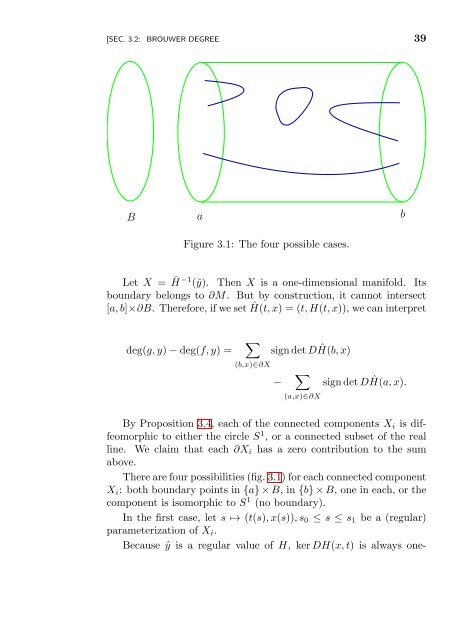Nonlinear Equations - UFRJ
Nonlinear Equations - UFRJ
Nonlinear Equations - UFRJ
Create successful ePaper yourself
Turn your PDF publications into a flip-book with our unique Google optimized e-Paper software.
[SEC. 3.2: BROUWER DEGREE 39<br />
B<br />
a<br />
Figure 3.1: The four possible cases.<br />
b<br />
Let X = ¯H −1 (ỹ). Then X is a one-dimensional manifold. Its<br />
boundary belongs to ∂M. But by construction, it cannot intersect<br />
[a, b]×∂B. Therefore, if we set Ĥ(t, x) = (t, H(t, x)), we can interpret<br />
deg(g, y) − deg(f, y) =<br />
∑<br />
(b,x)∈∂X<br />
sign det DĤ(b, x)<br />
−<br />
∑<br />
(a,x)∈∂X<br />
sign det DĤ(a, x).<br />
By Proposition 3.4, each of the connected components X i is diffeomorphic<br />
to either the circle S 1 , or a connected subset of the real<br />
line. We claim that each ∂X i has a zero contribution to the sum<br />
above.<br />
There are four possibilities (fig. 3.1) for each connected component<br />
X i : both boundary points in {a} × B, in {b} × B, one in each, or the<br />
component is isomorphic to S 1 (no boundary).<br />
In the first case, let s ↦→ (t(s), x(s)), s 0 ≤ s ≤ s 1 be a (regular)<br />
parameterization of X i .<br />
Because ŷ is a regular value of H, ker DH(x, t) is always one-

















